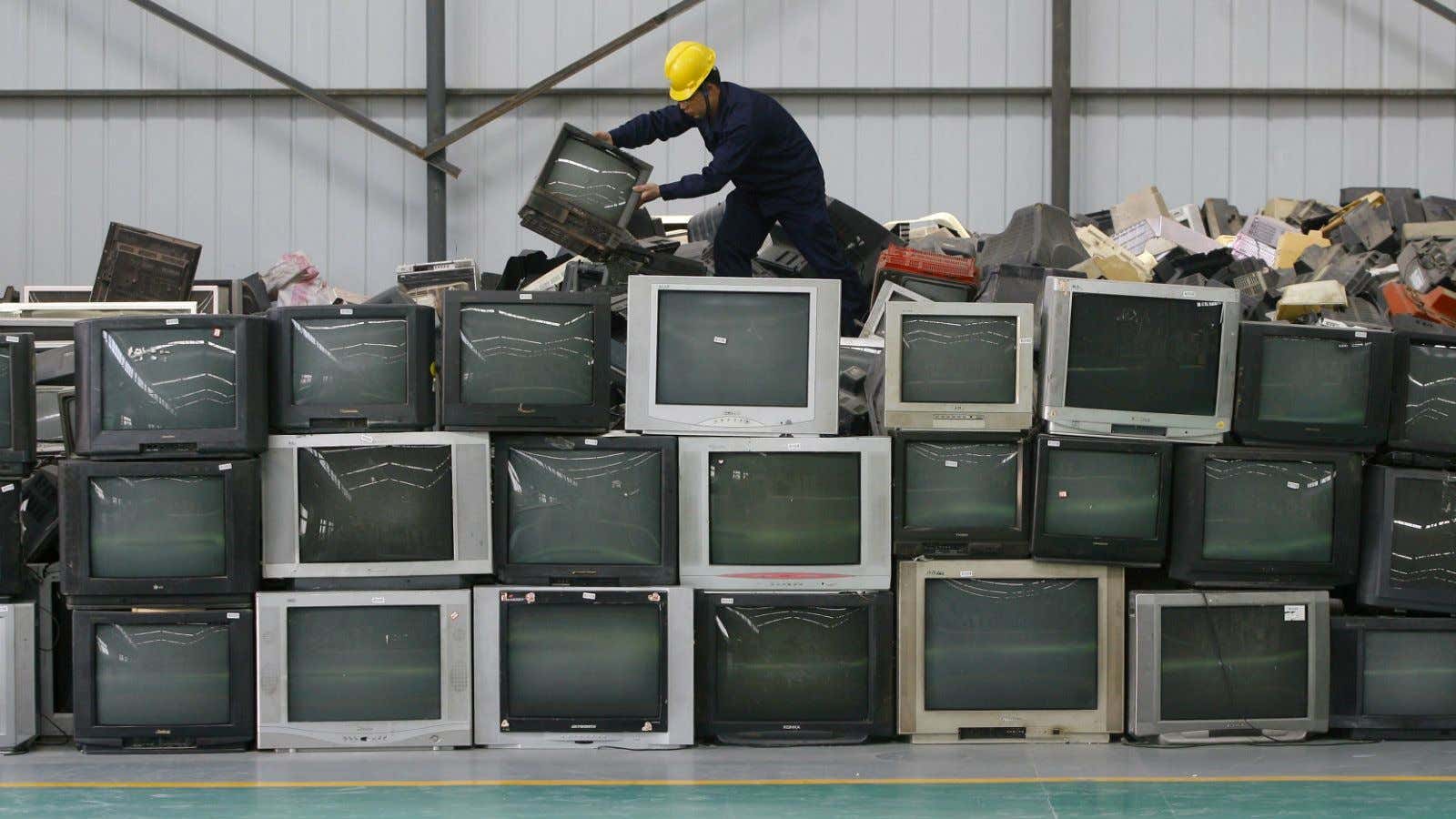More choice means more reason than ever to cut the cord.
The share of US cable and satellite-TV subscribers who are thinking of dropping their service is growing faster than ever, found research by Frank N. Magid Associates that dates back to 2011. Nine percent of the US pay-TV subscribers surveyed by the firm said they were “extremely likely” to cut the cord in the next year, up from 6% in 2016, Axios reported. That’s a 3-percentage-point annual increase, the highest in the survey question’s history.
In 2016, there were an estimated 99.4 million pay-TV households in the US, according to Statista. And the market lost an estimated 1.5 million subscribers, Variety reported.
In the past two years, five new players have entered the space—three of which launched in the last six months—offering cheaper, streaming alternatives with smaller, and more customizable bundles of live channels, with no commitments. SlingTV, PlayStation Vue, DirecTV Now, YouTube TV, and Hulu all sell packages for around $40 a month, compared to the $90 the average American pays for cable. And Verizon plans to roll out a similar service this year.
According to research firm Bernstein, these new streaming TV bundles are most appealing to existing pay-TV subscribers, usually those with the largest, most expensive packages. The company held focus groups in New York, San Francisco, and Chicago, and found that people who already paid for cable or satellite TV were the most likely to sign up for the new offerings. “If they can trade down, save money, and still get the content that’s most important to them, they’re willing to consider switching,” Bernstein wrote in a May report. “Cord-nevers/cord-cutters, on the other hand, once again expressed almost no interest.”
And let’s not forget the array of subscription-video services pulling people away from traditional TV—most notably Netflix, Amazon, and Hulu, which offer thousands of hours of popular TV shows and movies on-demand. Some traditional TV networks, like CBS and HBO, also sell subscriptions to their content online, allowing viewers to bypass TV altogether. And there are dozens of niche services out there like Crunchyroll and BritBox that offer specialized content.
Magid, the research firm, annually surveys about 1,000 US news consumers between the ages 18 and 64. And, as part of that study, it asked participants if they subscribed to a pay-TV service and how likely those pay-TV subscribers were to cancel their service in the next year. Respondents answered on a scale of 1-5, 1 meaning not likely and 5 meaning extremely likely.
